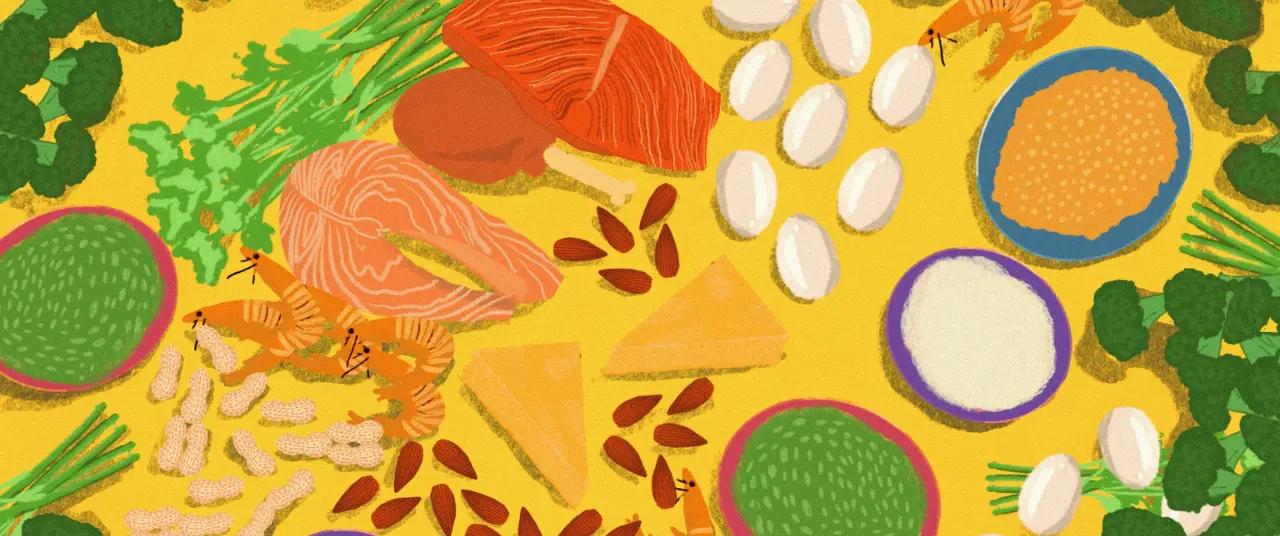These meals aren’t just a matter of health; they encourage children to attend classes more regularly






The Plate and the Planet is a monthly column by Dr. Madhura Rao, a food systems researcher and science communicator, exploring the connection between the food on our plates and the future of our planet.
A few months ago, I delivered a guest lecture on policies addressing the human right to food. During the question-and-answer session that followed, a student asked me which policy intervention I thought was the most effective—a deceptively simple question. After offering the usual caveats about there being no silver bullet for ending hunger, I said that my vote would go to free school meals (often referred to as universal school meals).
School meals reach children at a critical stage of life, when nutrition most directly shapes physical growth, cognitive development, and long-term wellbeing. But the ripple effects extend far beyond the wellbeing of individual children. Free school meals can benefit society as a whole by raising attendance rates and allowing children to stay in school longer; they can ease the burden on households struggling with food costs and cooking; and they can even support local farmers and help maintain biodiversity. In this column, I hope to continue the discussion that started in the classroom and highlight the multi-fold benefits of providing nutritionally balanced, context-sensitive meals to school-going children.
India’s Mid Day Meal scheme
India’s Mid Day Meal Scheme, launched in 1995 and now operating under the PM POSHAN banner, is the world’s largest school feeding programme and provides one free meal a day to over 11 crore children in over 11 lakh government-aided schools and education centres. Its goals are ambitious: improve enrollment and attendance, tackle classroom hunger, enhance nutritional outcomes, and support equity. The scheme’s guidelines stipulate nutritional standards of 450 calories and 12 grams of protein for primary school children, and 700 calories and 20 grams of protein for upper-primary students. Costs are divided between the central and state governments. The centre supplies food grains such as wheat or rice, while the states pay for the other expenses required for a full meal and decide the menus for schools.
Studies have shown gains in school enrollment, especially among girls and children from marginalised communities as well as modest improvements in height, weight, and learning outcomes over time. Since 2013, the midday meal has been a legal right for school-going children, but the contents of that meal are not sufficiently secured by law and remain subject to the discretion of state governments.
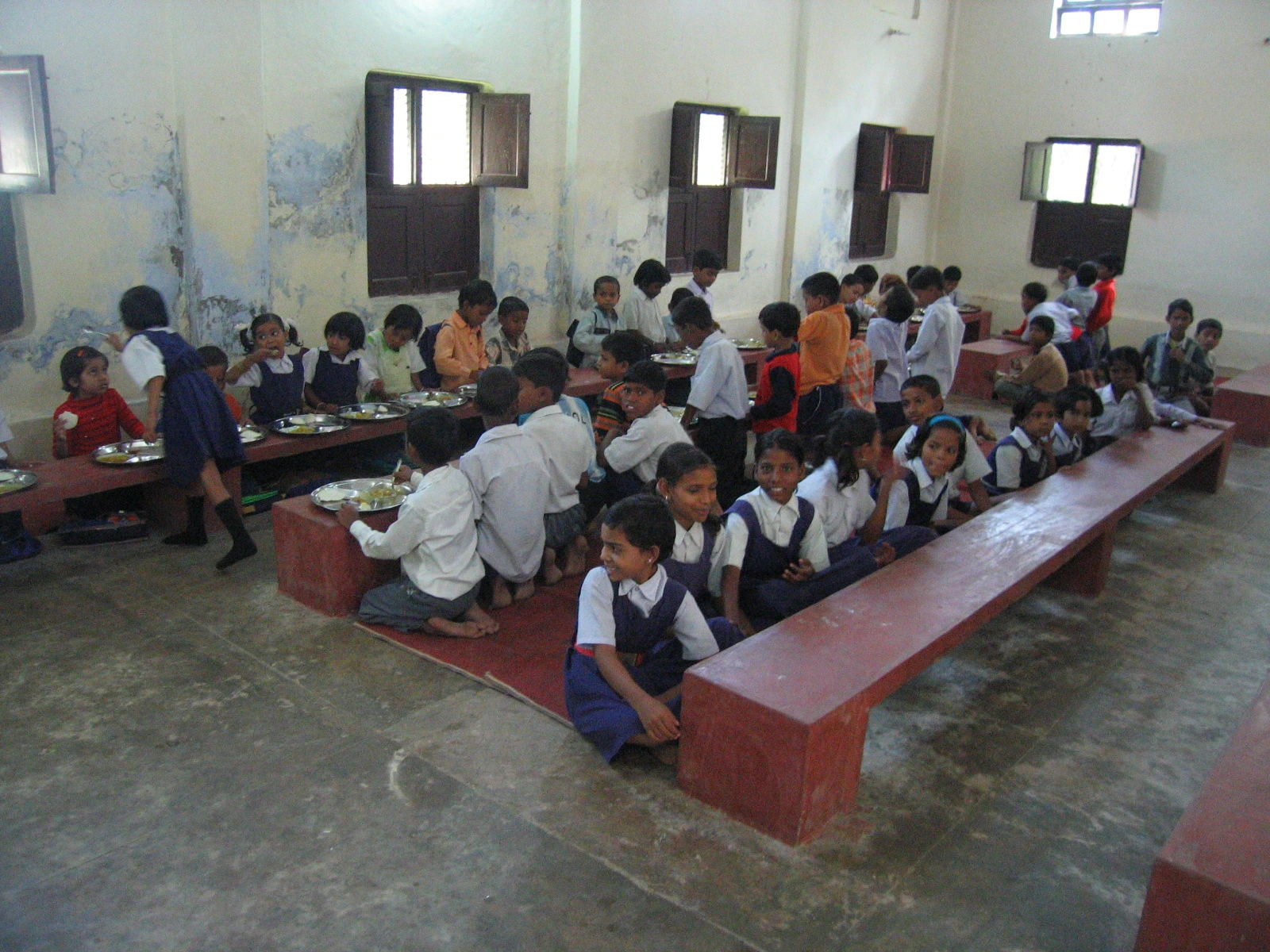
Also read: Ultra-processed foods are reshaping our diets. Should we be worried?
The case for nutritionally balanced meals
Providing a cooked meal in school has transformed daily life for crores of children in India. But balance remains the missing piece. Rising food inflation has put pressure on the budget for midday meals, often forcing schools to cut corners by reducing variety, omitting vegetables or protein sources, and relying largely on cereals to produce midday meals at scale. State governments often partner with non-profit organisations to deliver these meals, and in turn, the ethos of these organisations shape both the quality and the flavour of children’s meals. In the past, a well-known foundation faced criticism for the exclusion of onion and garlic for spiritual-cultural reasons—a choice that was found to make meals unappetising for children and discouraging them from eating.
Rising food inflation has put pressure on the budget for midday meals, often forcing schools to cut corners by reducing variety, omitting vegetables or protein sources, and relying largely on cereals to produce midday meals at scale.
The inclusion of eggs in school meals is an interesting discussion in this regard. Nutritionists have long argued that eggs are among the easiest and cheapest ways to improve diets, with just one egg covering close to half the protein content that a midday meal is meant to provide to primary school students. Many states do include eggs in their school meals, but religiously motivated objections from parents and social interest groups make the presence of eggs uncertain and frequently contested.
If the Mid Day Meal scheme is to fulfil its promise, the government must make more concerted efforts to meet children’s nutritional needs. The Safe Food and Balanced Diets for Children in School regulation, introduced by FSSAI in 2020, marks a step in this direction. It calls for meals that are safe, seasonal, and nutritionally balanced, while discouraging foods that are high in fat, sugar, or salt. On paper, this could help the programme move on from being a hunger relief aid to an investment in public health nutrition. The challenge, however, will be to translate these guidelines into practice and ensure resources and oversight keep pace.
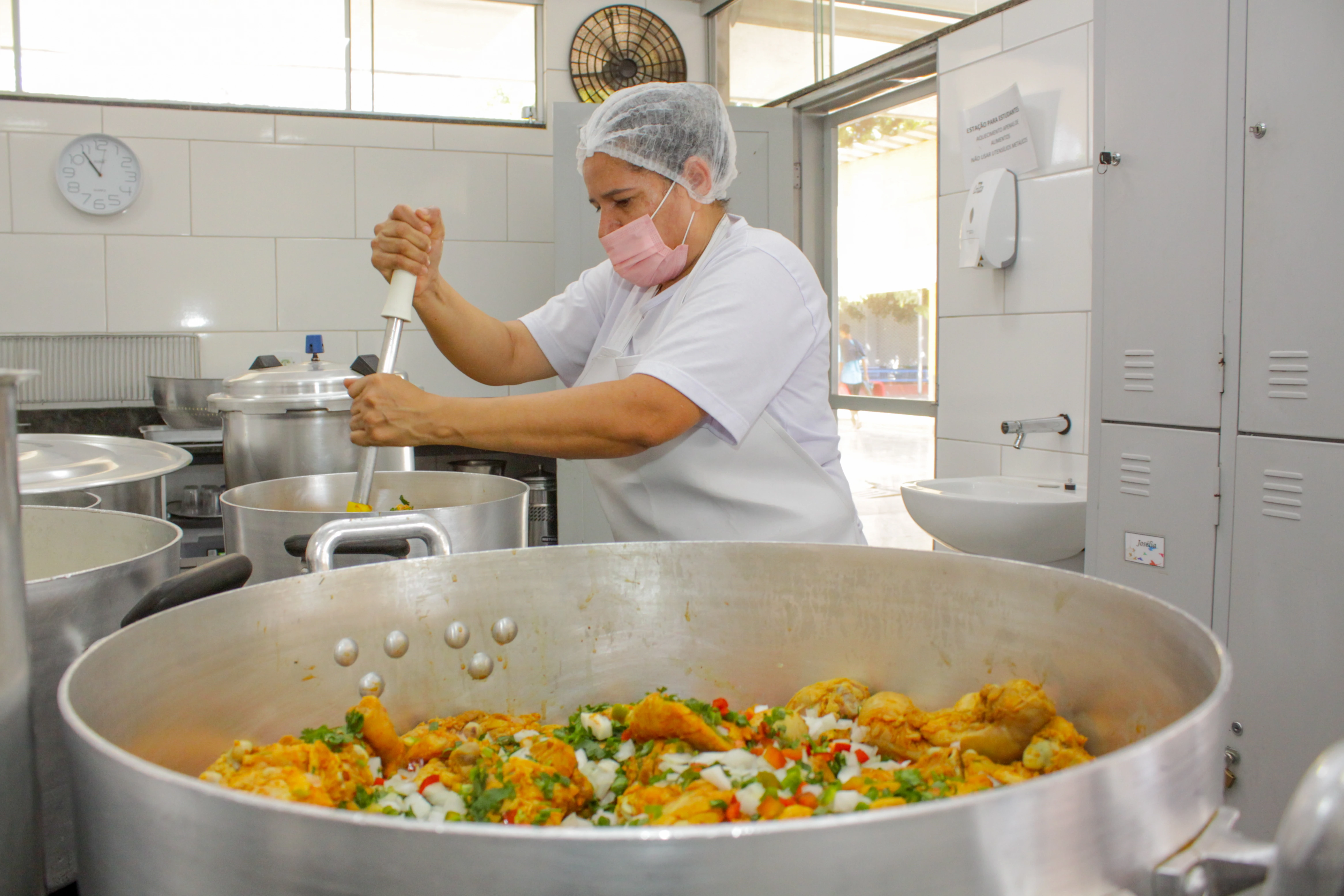
East or west, local is the best
Around the world, governments are discovering that school meals can do double duty—they can nourish children and strengthen local food systems at the same time. Brazil is perhaps the best known example. Its national programme, which feeds over 4 crore children, requires that at least 30% of the school meal budget be used for procuring food from local family-run farms. This rule has reshaped supply chains, providing millions of children with fresh fruits, vegetables, pulses, and meat while giving farmers a guaranteed market and income stability. In Angola, Honduras and Peru, schools have worked with small-scale fishers to bring locally caught fish onto the menu, improving children’s access to protein and securing livelihoods in coastal communities.
School meals can also be turned into means of teaching school-going children about where their food comes from and how it’s prepared.
There is also growing recognition that school meals can play a role in reviving biodiversity. Neglected and underutilised crops like amaranth, millets, and cowpeas are often more resilient to climate stress than common staples. For children, this means varied and climate-smart meals. For farming communities, it creates demand for crops that conserve biodiversity and use fewer inputs.
India, too, is experimenting with this approach. In the hills of Meghalaya, for example, school meals now draw on indigenous and seasonal produce, resulting in meals that include rice paired with pumpkin dal and cured fish, omelettes with fiddlehead ferns, chutneys made with fish mint, and pickles from wild berries. Much of this food is foraged or sourced from nearby farmers, resulting in meals that reflect children’s own culinary traditions while supporting biodiversity and local livelihoods.
In many other regions, however, the push for cost control and increasingly centralised production of the meals means that local or seasonal ingredients and culinary traditions are sidelined. In several parts of the country, school meals consist of a carbohydrate—usually rice or roti—accompanied by a watery dal.
Also read: What it takes to feed India’s growing cities
Taking a hands-on approach
School meals can also be turned into means of teaching school-going children about where their food comes from and how it’s prepared. When children are involved in planting vegetables, tending gardens, or helping to serve and cook, school meals become a way of teaching responsibility, cooperation, and respect for what sustains us.
{{marquee}}
In India, efforts along these lines are beginning to take root. In Bihar, ‘nutri-gardens’ have become living classrooms where children plant spinach, cauliflower, and tomatoes, compost kitchen waste, and later eat what they have grown. In Goa, hundreds of schools now maintain food gardens that supply herbs and vegetables for midday meals. From weeding to watering, children now tend gardens on school grounds, turning once-wasted patches of land into productive beds of vegetables. Alongside lessons about balanced diets, these activities are linked with healthier food habits among students and a noticeable decline in waste from the midday meal.
The long road ahead
The Mid Day Meal scheme has achieved what few school feeding programmes anywhere in the world have managed. However, in a country with stubbornly high rates of child malnutrition and persistent inequalities in access to food, there remains much to be achieved. Research points to implementation issues like delays in staff payment, variability in food quality, and inadequate infrastructure. In rare but tragic cases, food safety failures have caused poisoning or even deaths due to contamination or improper storage.
Done well, the midday meal can stand as one of India’s most important contributions to child welfare.
The programme is also shaped by deep social and institutional fault lines. Caste-based discrimination continues to influence who prepares the food and who eats it, undermining the scheme’s promise of equity. Nutritional and ecological goals are often overshadowed by the sheer pressure of feeding crores on time. However, with sustained investment, learning from the accomplishments and failings of school feeding programmes elsewhere, better monitoring, and the courage to adapt menus to children’s real needs, the scheme can build on its achievements. Done well, the midday meal can stand as one of India’s most important contributions to child welfare. Feeding children, yes, but also giving them the strength to learn, grow, and look to the future with confidence.
Also read: Protecting place and power, not people: The trouble with GI tags
Artwork by Alia Sinha
{{quiz}}
References

When did India launch the Mid Day Meal scheme?
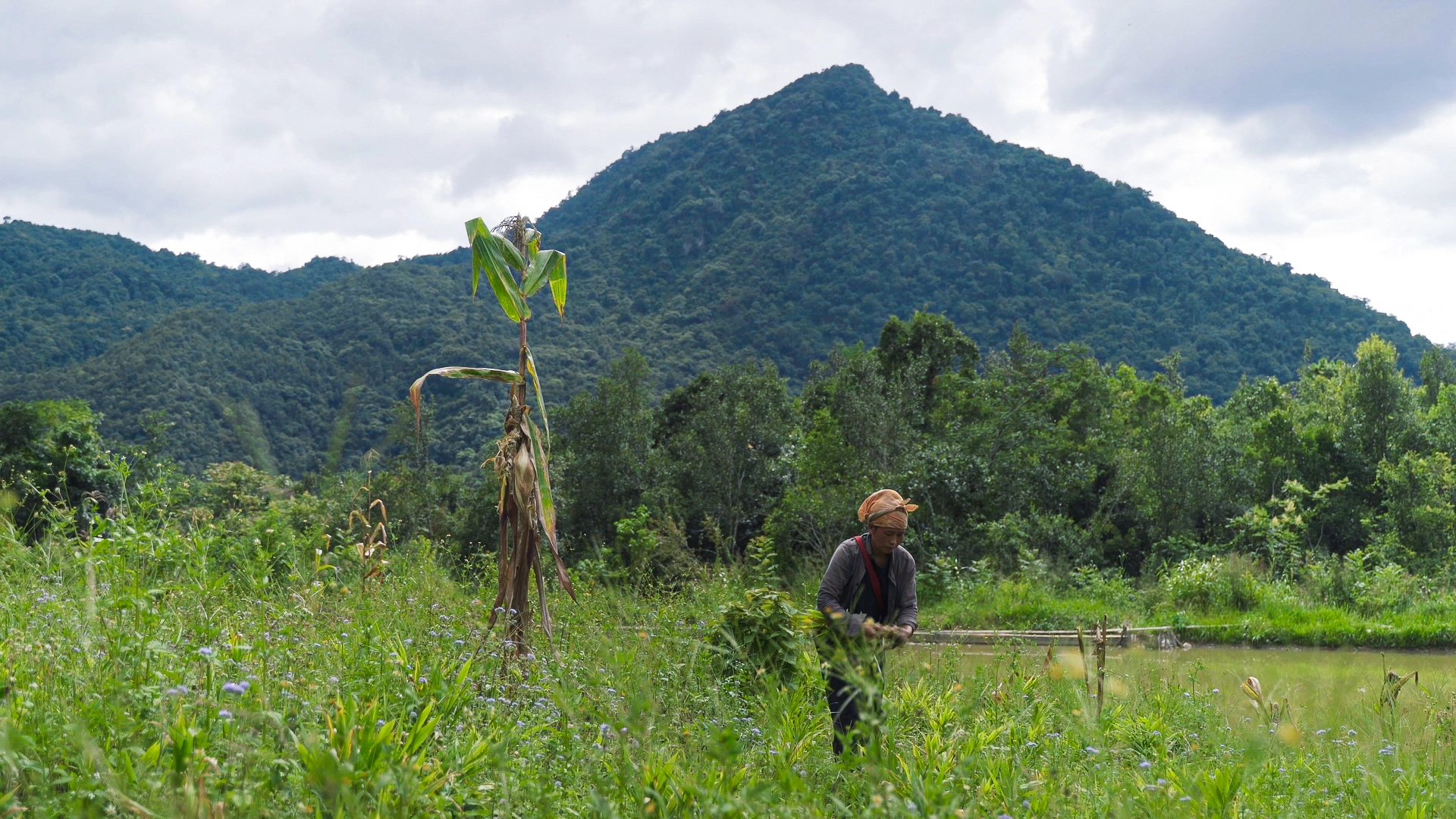

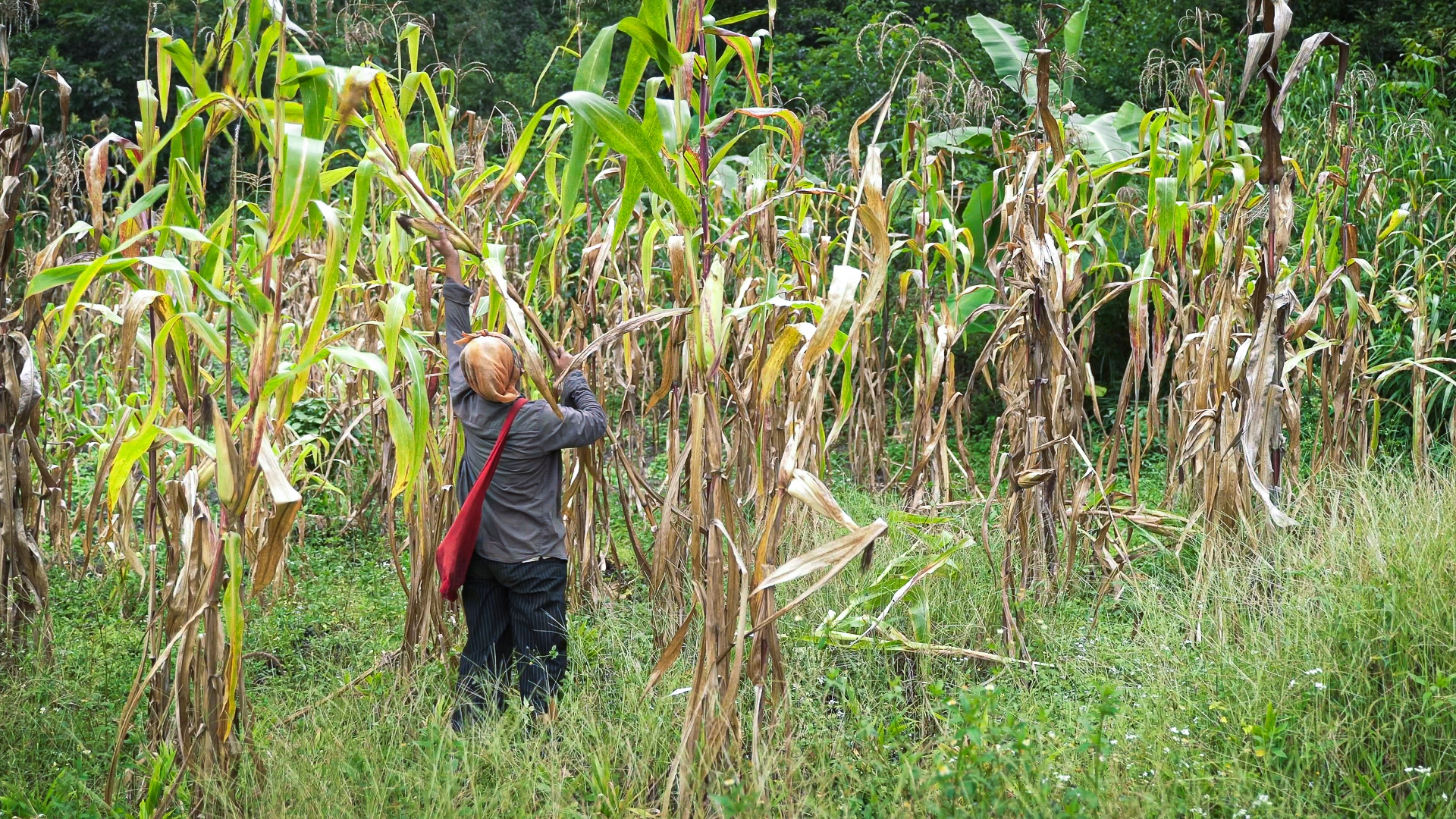





















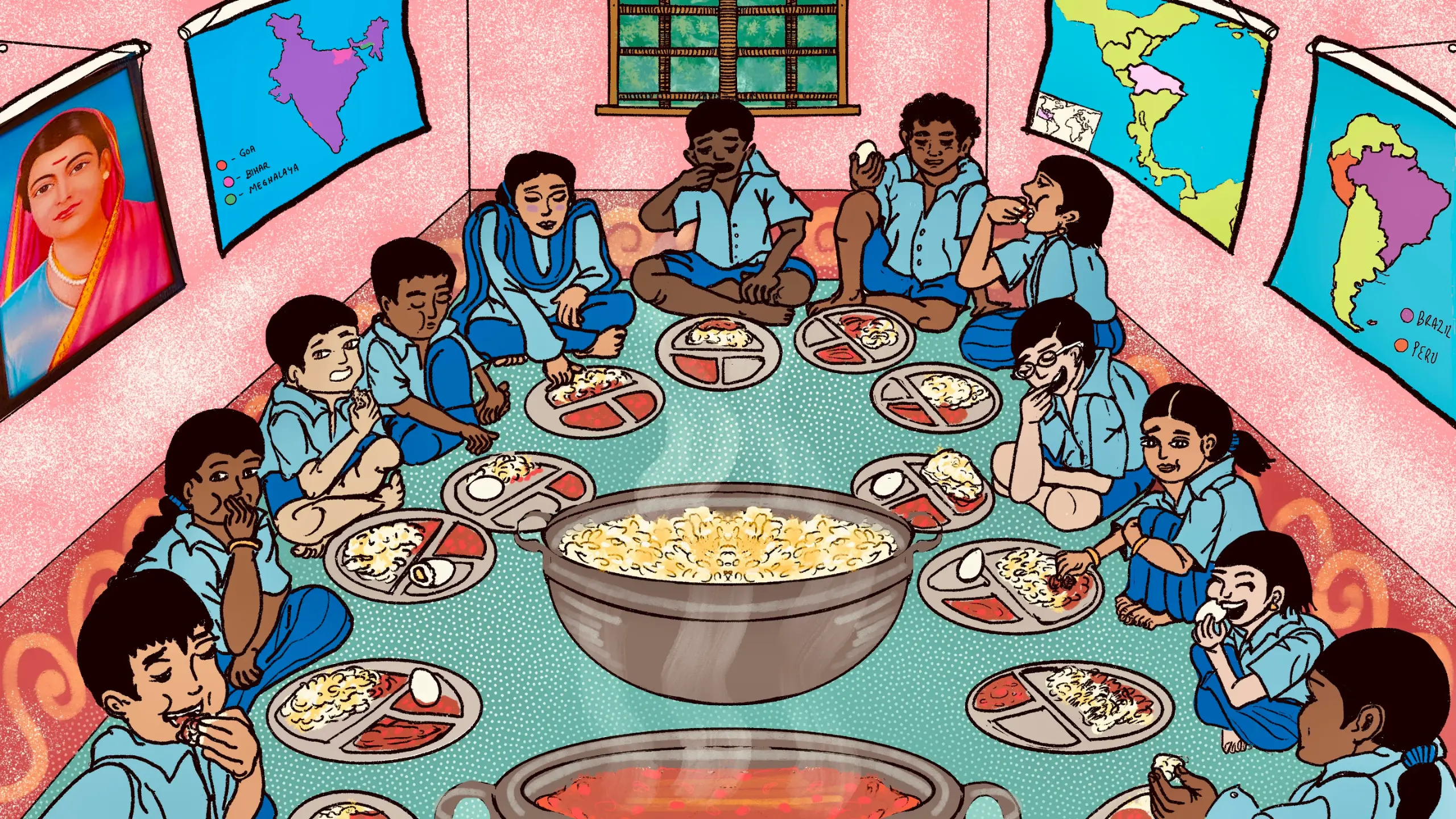
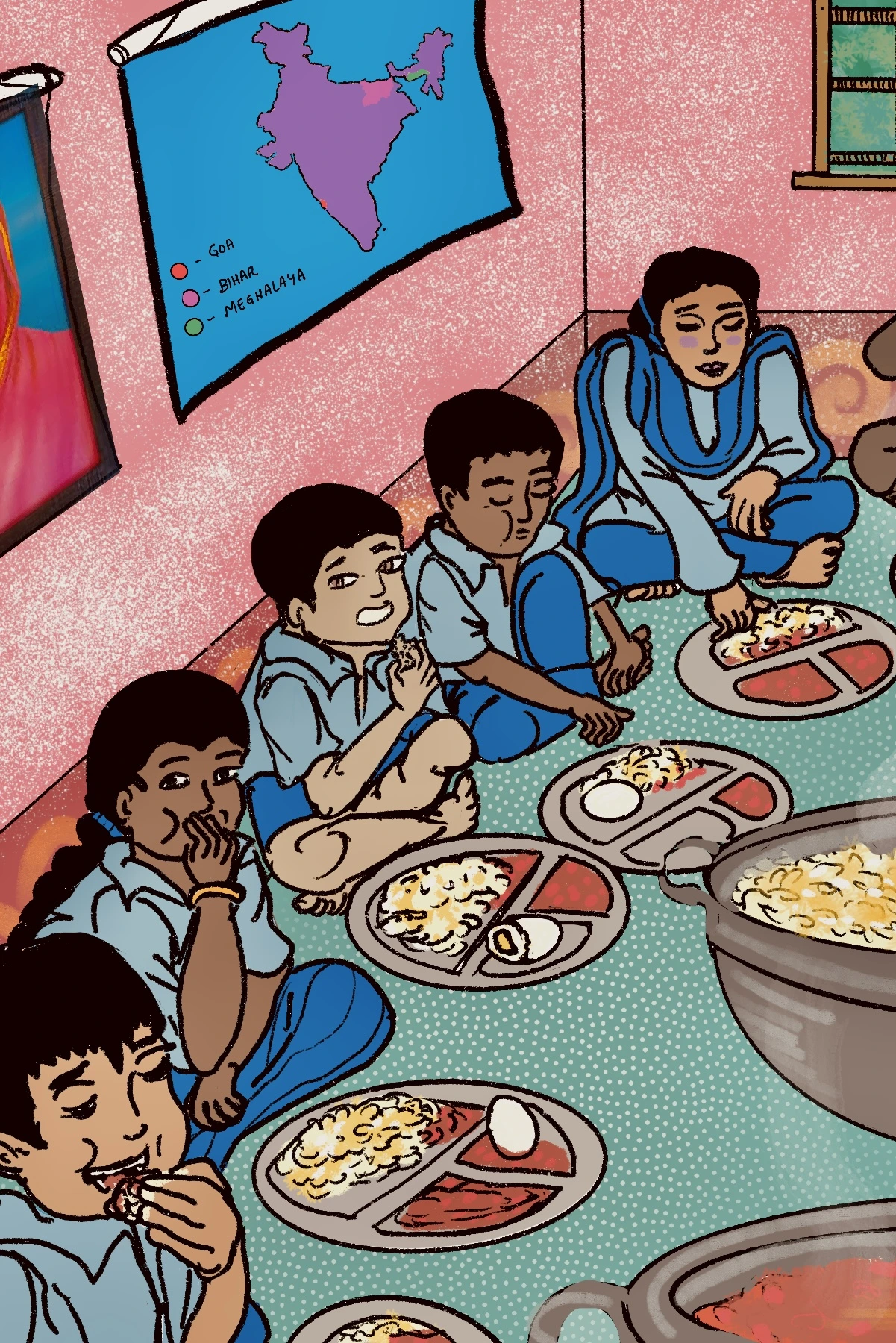



.avif)


